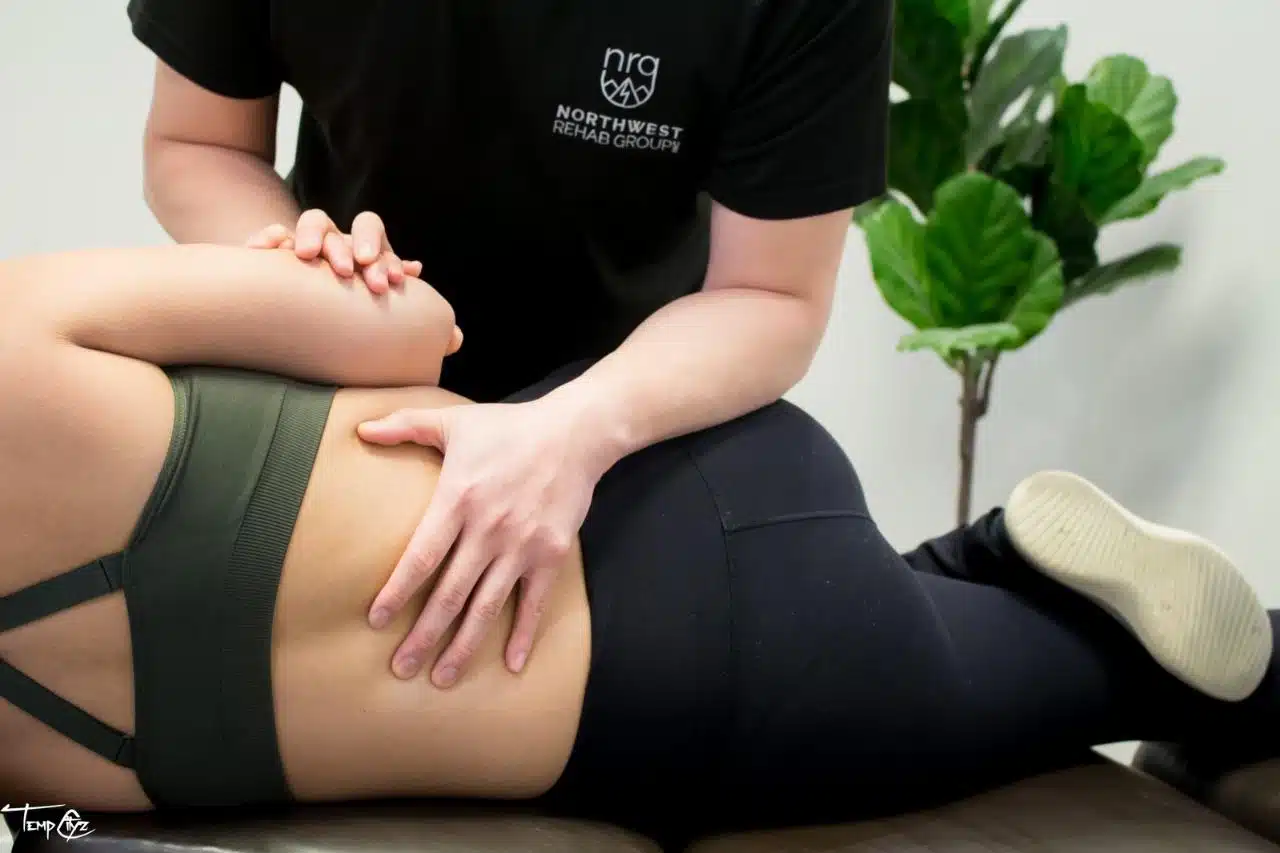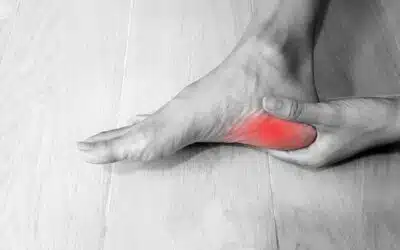Physiotherapy, also known as physical therapy, is a vital healthcare profession that focuses on improving patients’ ability to move and function while promoting their general health and well-being. It involves a comprehensive approach to diagnosing and treating a variety of health conditions, using a broad array of treatment techniques aimed at restoring movement, reducing pain, and preventing further injury. This includes everything from targeted exercises and manual therapy to education and advice tailored to the individual’s unique needs and goals.
The role and importance of physiotherapy cannot be overstated in the world of post-surgical recovery. Surgery, while often necessary to treat an underlying health condition or injury, can significantly impact the body’s normal functioning. It can lead to muscle weakness, restricted movement, and a host of other challenges that affect a person’s quality of life and ability to carry out their daily activities.
This is where physiotherapy steps in. In the aftermath of surgery, a well-structured physiotherapy program is frequently an integral part of the recovery process. Its primary objective is to help patients regain their strength, mobility, and function, so they can return to their normal activities or routines as swiftly and safely as possible.
Physiotherapists work closely with each patient, developing personalized treatment plans based on the type of surgery, the patient’s general health, and their recovery goals. Whether it’s helping a patient learn to walk again after a hip replacement, improving range of motion after shoulder surgery, or restoring strength following a cardiac procedure, physiotherapy plays a pivotal role in ensuring a successful and effective recovery journey.
In the upcoming sections, we will dive deeper into the intricacies of physiotherapy for post-surgical recovery, what patients can expect from this process, and how it can transform the postoperative experience.
Understanding Physiotherapy
Physiotherapy, often known as physical therapy in some regions, is a field of healthcare that emphasizes the importance of physical movement and function in maintaining a healthy and fulfilling life. It’s defined by the World Confederation for Physical Therapy (WCPT) as a service provided by professionals to individuals and populations to develop, maintain, and restore maximum movement and functional ability throughout the lifespan.
The practice of physiotherapy rests on several core principles. At its heart, it’s patient-centred, meaning the unique needs, goals, and well-being of the patient are always the priority. Furthermore, it’s proactive, emphasizing prevention and early intervention as much as treatment and rehabilitation.
Types of Physiotherapy Treatments
The breadth and diversity of physiotherapy treatments reflect the wide range of conditions it can address. Here are a few key types:
- Manual Therapy: Involves hands-on techniques to mobilize joints, massage soft tissues, and reduce pain. It includes techniques like manipulation, mobilization, and massage.
- Exercise Programs: Physiotherapists design targeted exercises to improve strength, flexibility, and endurance and to correct posture and muscle imbalances.
- Electrotherapy Techniques: Techniques like Transcutaneous Electrical Nerve Stimulation (TENS) and ultrasound can help to relieve pain and accelerate healing.
Role of Physiotherapists
Physiotherapists are skilled healthcare professionals who administer physiotherapy treatments. They play a critical role in helping patients overcome physical limitations resulting from injuries, diseases, or surgery. Their tasks are manifold: they assess and diagnose the patient’s condition, develop individualized treatment plans, conduct hands-on treatments, prescribe and monitor exercise programs, and offer advice on managing the condition in the long term.
Furthermore, they collaborate with other healthcare professionals to ensure the patient’s overall healthcare plan is cohesive and targeted toward their well-being. The ultimate goal of a physiotherapist is to enable patients to achieve the best possible physical function and quality of life. They are a crucial ally in navigating the journey to recovery, particularly in the context of post-surgical rehabilitation.
Why Physiotherapy is Often Needed After Surgery
Surgery, while often life-saving or life-improving, can result in significant physical impacts on the body. It may lead to a reduction in mobility due to protective mechanisms such as pain and inflammation, muscle weakness due to extended periods of inactivity, or a lack of confidence in performing certain movements for fear of causing harm or discomfort. Consequently, the body may develop compensatory behaviours to avoid pain or discomfort, which can lead to an imbalance and further complications.

That’s where post-surgical physiotherapy steps in. Physiotherapy can help break this cycle, ensuring the patient can return to normal functioning as quickly and safely as possible. By tackling pain, improving strength and mobility, and rebuilding confidence in movement, physiotherapy is key to a successful post-surgery recovery.
Benefits of Physiotherapy in Post-Surgical Recovery
Post-surgical physiotherapy offers a multitude of benefits to patients recovering from a wide variety of surgical procedures. Here are some of the key ones:
- Accelerating Recovery: Through targeted exercises and treatments, physiotherapy can help speed up healing, getting patients back on their feet sooner.
- Improving Strength and Mobility: Physiotherapy can address muscle weakness and mobility restrictions that typically occur after surgery.
- Restoring Function: Whether it’s returning to work, sports, or daily activities, physiotherapy helps patients regain their ability to perform their usual tasks.
- Preventing Complications: Physiotherapy can help prevent common post-surgical complications, such as blood clots, pneumonia, and issues resulting from prolonged bed rest.
Case Study: Knee Replacement Surgery
Take, for example, a patient who has undergone knee replacement surgery due to severe arthritis. The patient might experience considerable pain, swelling, and difficulty moving the affected leg post-surgery. This is where the role of physiotherapy becomes invaluable.
A physiotherapist will initially help manage pain and swelling using techniques such as ice, elevation, gentle movement, and advice regarding pain medication. As the patient’s condition improves, the physiotherapist will gradually introduce strengthening and mobility exercises to improve the function of the new knee joint.
With a structured physiotherapy program, the patient can expect to see improvements in walking, climbing stairs, and overall mobility, gradually returning to their regular activities. This case illustrates how physiotherapy plays a pivotal role in the journey from surgical recovery back to normal life.
What to Expect from Post-surgical Physiotherapy
The first step in post-surgical physiotherapy usually involves the physiotherapist’s comprehensive assessment and evaluation. This might include a review of your surgical report, a physical examination of your surgical site, a discussion about your current symptoms, and an evaluation of your general physical condition. The physiotherapist will also assess your mobility, strength, balance, and overall functional abilities. All these steps help the physiotherapist understand your unique situation and develop an effective treatment plan.
Development of a Tailored Physiotherapy Program
Based on the assessment, the physiotherapist will develop a personalized physiotherapy program to address your specific needs and goals. This plan will detail the treatments and exercises you will perform, their frequency and duration, and the expected milestones in your recovery. Remember, every patient’s recovery journey is unique; thus, the program should be adapted and progressed over time based on your improving condition and evolving needs.
Common Physiotherapy Exercises and Treatments
Your physiotherapy program may include a variety of exercises and treatments. For example, strength exercises can help you regain muscle function, flexibility exercises can improve your range of motion, and balance exercises can help prevent falls. You may also undergo manual therapy, where the physiotherapist uses hands-on techniques to alleviate pain and improve mobility. Modalities like heat, ice, or electrical stimulation may be used to manage pain and inflammation.
Patient Participation and Home Exercises
It’s essential to remember that your participation is crucial to the success of the physiotherapy program. While the physiotherapist plays a critical role in guiding and treating you, the recovery will largely depend on your commitment to the program, particularly the exercises prescribed to be performed at home. Consistently performing these exercises as instructed will help enhance your recovery and enable you to return to your normal activities sooner.
Typical Timeline and Progression of Post-surgical Physiotherapy
The timeline and progression of post-surgical physiotherapy can vary significantly depending on the type of surgery, your general health condition, and your personal recovery goals. Some patients might see substantial improvements within a few weeks, while others might require several months of therapy. Your physiotherapist will regularly review your progress and adjust your program as needed to ensure you’re on track toward meeting your recovery goals.
Despite the challenges, it’s important to stay patient and persistent. Post-surgical recovery is often a journey, but with the help of physiotherapy, you can look forward to regaining your strength, function, and quality of life.
The Impact of Physiotherapy on Post-Surgical Recovery
Physiotherapy can significantly speed up the healing process following surgery. Physiotherapists use a range of techniques, from manual therapy to personalized exercise programs, designed to improve blood circulation to the affected area, reduce inflammation, and promote tissue healing. Additionally, physiotherapy can help manage post-surgical pain, making it easier for patients to move and participate in their recovery, further accelerating the healing process.

Preventing Post-Surgical Complications
Physiotherapy plays a vital role in preventing common post-surgical complications. Regular movement and exercises can help prevent stiffness in joints and muscles, a common issue after surgery due to prolonged periods of inactivity. Physiotherapy can also ward off chronic pain by ensuring that joints and muscles are moving correctly, reducing strain on the body. Furthermore, targeted strength exercises can prevent muscle atrophy (weakness) which often occurs when certain muscles are not used during recovery.
Enhancing Mobility and Function
Physiotherapy can significantly enhance mobility and function after surgery. It does this by progressively strengthening the muscles, improving flexibility, and restoring balance and coordination. These improvements can enable patients to regain their ability to perform daily activities, from walking and climbing stairs to more demanding tasks, depending on their individual goals. This not only leads to greater independence but can significantly improve a patient’s quality of life.
Evidence Supporting the Benefits of Physiotherapy in Post-Surgical Recovery
The benefits of physiotherapy in post-surgical recovery are well-documented in scientific literature. For example, a study published in the Journal of Orthopaedic & Sports Physical Therapy found that early physiotherapy intervention after joint replacement surgery led to improved function and a quicker return to daily activities. Similarly, a review published in the Journal of Physical Therapy Science highlighted the effectiveness of physiotherapy in reducing pain and improving the quality of life for patients following cardiac surgery.
In essence, evidence strongly suggests that physiotherapy, as part of a comprehensive post-surgical recovery plan, can significantly improve patient outcomes, speed up recovery, and enhance quality of life. Therefore, it’s not just an optional addition but an integral component of successful post-surgical recovery.
Patient Testimonials/Case Studies
Patient Story #1: Jane’s Journey After Hip Replacement Surgery
Jane, a 68-year-old retired teacher, underwent hip replacement surgery due to severe osteoarthritis. Post-surgery, she experienced significant pain and stiffness, making it difficult for her to walk without support. However, with a comprehensive physiotherapy program, Jane’s recovery journey took a turn for the better.
The initial days were challenging; she had to endure pain while learning to trust her new hip joint. However, her physiotherapist was there every step of the way, providing pain management techniques and introducing gentle mobility exercises. Over time, Jane progressed to strengthening exercises, focusing on her core and leg muscles, which are critical for balance and walking.
Through consistent therapy sessions and adherence to her home exercise program, Jane’s mobility improved significantly. Within three months, she was walking independently and even returned to her beloved gardening, something she hadn’t been able to do comfortably for years before her surgery. For Jane, physiotherapy played an instrumental role in reclaiming her active life post-surgery.
Patient Story #2: Mark’s Recovery from Shoulder Surgery
Mark, a 35-year-old software engineer and a recreational tennis player, had to undergo shoulder surgery after a rotator cuff injury. Post-surgery, he struggled with limited shoulder movement, making even simple tasks like lifting a kettle or typing painful.
Enter post-surgical physiotherapy. Mark’s physiotherapist began with gentle passive exercises to maintain joint mobility without straining the healing tissues. Over time, Mark progressed to active exercises and resistance training aimed at regaining his shoulder strength and function.
Mark’s dedication to his physiotherapy program, coupled with the expertise of his therapist, paid off. Over a period of six months, not only did he regain full range of motion and strength in his shoulder, but he also returned to playing tennis without discomfort. Mark credits physiotherapy with not only restoring his physical function but also helping him regain his favourite pastime post-surgery.
These stories illustrate how, despite the challenges faced during post-surgical recovery, patients can overcome these hurdles with the right guidance from physiotherapy and return to their normal lives. The progress and results achieved through physiotherapy can be truly transformational, paving the way for successful recovery.
Conclusion
As we have explored in this article, physiotherapy plays an invaluable role in post-surgical recovery, paving the way for improved health outcomes, faster return to normal activities, and enhanced quality of life. It commences with a comprehensive assessment by a skilled physiotherapist, leading to the development of a personalized treatment program that evolves in line with the patient’s progress.
Physiotherapy treatments are varied, ranging from manual therapy to personalized exercise programs, all aimed at reducing pain, improving mobility, and enhancing strength. Patients play an active role in their recovery, with their commitment to the therapy program, particularly home exercises, being crucial to successful outcomes.
The impact of physiotherapy on post-surgical recovery is well-documented and supported by scientific evidence, with significant benefits seen in accelerated healing, complications prevention, and enhanced function and mobility. Real-life patient testimonials further highlight the transformative power of physiotherapy in navigating the post-surgical recovery journey.
In conclusion, physiotherapy is not merely an optional extra in post-surgical recovery; it is an essential component that can make a significant difference in the trajectory of a patient’s recovery. If you or a loved one are facing a surgical procedure, we highly recommend discussing with your healthcare team about incorporating physiotherapy into your post-surgical recovery plan. Your body, your well-being, and your future self will thank you for it.
References
- Bruun-Olsen, V., Heiberg, K. E., Wahl, A. K., & Mengshoel, A. M. (2013). The immediate and long-term effects of a walking-skill program compared to usual physiotherapy care in patients who have undergone total knee arthroplasty (TKA): a randomized controlled trial. Disability and rehabilitation, 35(23), 2008-2015.
- Artz, N., Elvers, K. T., Lowe, C. M., Sackley, C., Jepson, P., & Beswick, A. D. (2015). Effectiveness of physiotherapy exercise following hip arthroplasty for osteoarthritis: a systematic review of clinical trials. BMC musculoskeletal disorders, 16(1), 1-11.
- Hoffmann, T. C., Glasziou, P. P., Boutron, I., Milne, R., Perera, R., Moher, D., … & Michie, S. (2014). Better reporting of interventions: template for intervention description and replication (TIDieR) checklist and guide. Bmj, 348, g1687.
- Deyle, G. D., Henderson, N. E., Matekel, R. L., Ryder, M. G., Garber, M. B., & Allison, S. C. (2000). Effectiveness of manual physical therapy and exercise in osteoarthritis of the knee. A randomized, controlled trial. Annals of internal medicine, 132(3), 173-181.
- Huang, H., Nagao, M., Saunders, C., Rojas, J., & Gandhi, R. (2015). Functional outcomes following total knee arthroplasty: a randomized trial comparing an accelerated ambulation protocol with a standard of care protocol. Physiotherapy Canada, 67(1), 2-10.
- Mikkelsen, L. R., Mikkelsen, S. S., & Christensen, F. B. (2017). Early, intensified home-based exercise after total hip replacement—A pilot study. Physiotherapy Theory and Practice, 33(2), 141-152.
- Valkenet, K., van de Port, I. G., Dronkers, J. J., de Vries, W. R., Lindeman, E., & Backx, F. J. (2011). The effects of preoperative exercise therapy on postoperative outcome: a systematic review. Clinical Rehabilitation, 25(2), 99-111.






0 Comments